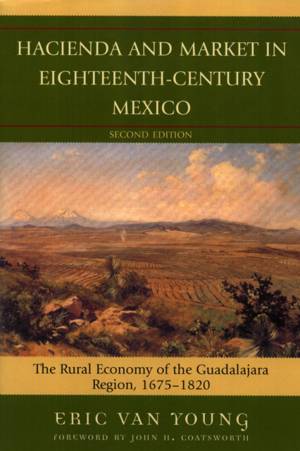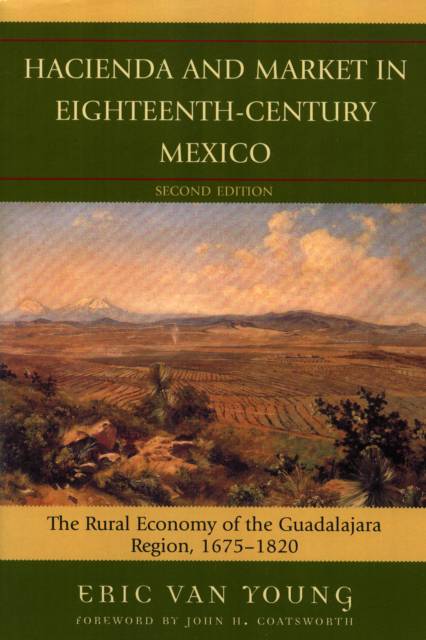
- Retrait gratuit dans votre magasin Club
- 7.000.000 titres dans notre catalogue
- Payer en toute sécurité
- Toujours un magasin près de chez vous
- Retrait gratuit dans votre magasin Club
- 7.000.0000 titres dans notre catalogue
- Payer en toute sécurité
- Toujours un magasin près de chez vous
Hacienda and Market in Eighteenth-Century Mexico
The Rural Economy of the Guadalajara Region, 1675-1820
Eric Van Young
102,45 €
+ 204 points
Format
Description
This classic history of the Mexican hacienda from the colonial period through the nineteenth century has been reissued in a silver anniversary edition complete with a substantive new introduction and foreword. Eric Van Young explores 150 years of Mexico's economic and rural development, a period when one of history's great empires was trying to extract more resources from its most important colony, and when an arguably capitalist economy was both expanding and taking deeper root. The author explains the development of a regional agrarian system, centered on the landed estates of late colonial Mexico, the central economic and social institution of an overwhelmingly rural society.
Spécifications
Parties prenantes
- Auteur(s) :
- Editeur:
Contenu
- Nombre de pages :
- 454
- Langue:
- Anglais
- Collection :
Caractéristiques
- EAN:
- 9780742553569
- Date de parution :
- 01-06-06
- Format:
- Livre broché
- Format numérique:
- Trade paperback (VS)
- Dimensions :
- 152 mm x 229 mm
- Poids :
- 598 g

Les avis
Nous publions uniquement les avis qui respectent les conditions requises. Consultez nos conditions pour les avis.






